Latest recommendations

| Id | Title | Authors | Abstract | Picture▲ | Thematic fields | Recommender | Reviewers | Submission date | |
|---|---|---|---|---|---|---|---|---|---|
02 Apr 2024

The Ashwell Project: Creating an Online Geospatial CommunityAlphaeus Lien-Talks https://doi.org/10.5281/zenodo.8307882A nice project looking at under-represented demographicRecommended by Alexis Pantos based on reviews by Catriona Cooper and Steinar Kristensen based on reviews by Catriona Cooper and Steinar Kristensen
The paper by A. Lien-Talks [1] presents a small project looking at the use of crowd sourced data collection and particpatory GIS. In particular it looks at the potential of these tools in response to socially disruptive and isolating events such as the COVID-19 pandemic as well as the potential role of digitially mediated heritage initiatives in tackling some of the challenges of changing demographics and life styles. The types of technologies employed are relatively mature, the project identifies potential for such approaches to be used within the local-history/local community settings, though is also a reminer that depsite the much broader adoption of technology within all areas of society than even a few years ago many barriers still remain. While the the sample size and data collected in the project is relatively modest, the focus on empathy toward the intended audiences from the design process, as well as some of the qualitative feedback reported serve as a reminder that participatory, or crowd-sourced data collection initiatives in heritage can, and perhaps should place potential social benefit before data-acquisition of objectives. The project also presents a demographic that is not often represented within the literature and the publication and as such the publication of the article represents a meaningful contribution to ongoing discussions of the role heritage and digitally mediated community archaeology can play a role in developing our societies. References [1] Lien-Talks, A. (2024). The Ashwell Project: Creating an Online Geospatial Community. Zenodo, 8307882, ver. 4 peer-reviewed and recommended by Peer Community in Archaeology. https://doi.org/10.5281/zenodo.8307882 | The Ashwell Project: Creating an Online Geospatial Community | Alphaeus Lien-Talks | <p>Background:<br>As the world becomes increasingly digital, so too must the way in which archaeologists engage with the public. This was particularly important during the COVID-19 pandemic, and many outreach and engagement efforts began to move o... |  | Computational archaeology | Alexis Pantos | 2023-09-01 11:25:54 | View | |
11 Oct 2023

Transforming the Archaeological Record Into a Digital Playground: a Methodological Analysis of The Living Hill ProjectSamanta Mariotti https://doi.org/10.5281/zenodo.8302563Gamification of an archaeological park: The Living Hill Project as work-in-progressRecommended by Sebastian Hageneuer based on reviews by Andrew Reinhard, Erik Champion and 1 anonymous reviewer based on reviews by Andrew Reinhard, Erik Champion and 1 anonymous reviewer
This paper (2023) describes The Living Hill project dedicated to the archaeological park and fortress of Poggio Imperiale in Poggibonsi, Italy. The project is a collaboration between the Poggibonsi excavation and Entertainment Games App, Ltd. From the start, the project focused on the question of the intended audience rather than on the used technology. It was therefore planned to involve the audience in the creation of the game itself, which was not possible after all due to the covid pandemic. Nevertheless, the game aimed towards a visit experience as close as possible to reality to offer an educational tool through the video game, as it offers more periods than the medieval period showcased in the archaeological park itself. The game mechanics differ from a walking simulator, or a virtual tour and the player is tasked with returning three lost objects in the virtual game. While the medieval level was based on a 3D scan of the archaeological park, the other two levels were reconstructed based on archaeological material. Currently, only a PC version is working, but the team works on a mobile version as well and teased the possibility that the source code will be made available open source. Lastly, the team also evaluated the game and its perception through surveys, interviews, and focus groups. Although the surveys were only based on 21 persons, the results came back positive overall. The paper is well-written and follows a consistent structure. The authors clearly define the goals and setting of the project and how they developed and evaluated the game. Although it has be criticized that the game is not playable yet and the size of the questionnaire is too low, the authors clearly replied to the reviews and clarified the situation on both matters. They also attended to nearly all of the reviewers demands and answered them concisely in their response. In my personal opinion, I can fully recommend this paper for publication. For future works, it is recommended that the authors enlarge their audience for the quesstionaire in order to get more representative results. It it also recommended to make the game available as soon as possible also outside of the archaeological park. I would also like to thank the reviewers for their concise and constructive criticism to this paper as well as for their time. References Mariotti, Samanta. (2023) Transforming the Archaeological Record Into a Digital Playground: a Methodological Analysis of The Living Hill Project, Zenodo, 8302563, ver. 5 peer-reviewed and recommended by Peer Community in Archaeology https://doi.org/10.5281/zenodo.8302563 | Transforming the Archaeological Record Into a Digital Playground: a Methodological Analysis of *The Living Hill* Project | Samanta Mariotti | <p>Video games are now recognised as a valuable tool for disseminating and enhancing archaeological heritage. In Italy, the recent institutionalisation of Public Archaeology programs and incentives for digital innovation has resulted in a prolifer... |  | Conservation/Museum studies, Europe, Medieval, Post-medieval | Sebastian Hageneuer | 2023-08-30 20:25:32 | View | |
21 Mar 2023
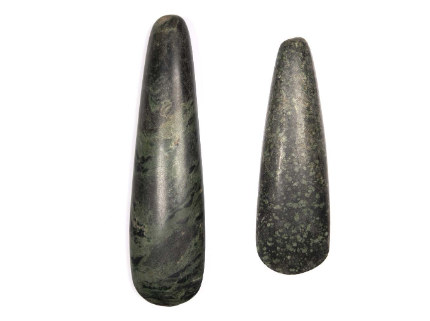
Hafted stone and shell tools in the Asia Pacific RegionChristopher Buckley https://doi.org/10.31234/osf.io/8cwa2From Polished Stone Tools to Population Dynamics: Ethnographic Archives as InsightsRecommended by Solène Denis based on reviews by Adrian L. Burke and 1 anonymous reviewerMost archaeological contexts provide objects without organic materials making them quite silent regarding their hafting techniques and use. This is especially true for the polished stone tools that only thanks to a few discoveries in a wet environment, we can obtain some insights regarding their hafting techniques. Use-wear analysis can also be of some support to get a better picture of these artefacts (e.g. Masclans Latorre 2020), whose typology testifies to an important diversity in European Neolithic contexts that sometimes are well-documented from the chaîne opératoire perspective (see De Labriffe and Thirault dir. 2012). The study offered by Chris Buckley (2023) constitutes an important contribution to animating these tools. His work relies on the Asia Pacific region, where he gathered data and mapped more than 300 ethnographic hafted stone and shell tools. This database is available on a webpage https://www.google.com/maps/d/u/0/viewer?mid=1D_sC7VUtQRuRcCgc9rROVU7ghrdiVAg&ll=-2.458804534247277%2C154.35254980859378&z=6, providing a short description and pictures of some of the items, completed by Supplementary data. Thanks to this important record of entire objects, the author presents the different possibilities regarding hafting styles, blade orientations and attachment techniques. The combination of these different characteristics led the author to the introduction of a dynamic typology based on the concept of ‘morphospace’. Eight types have been so identified for the Asia Pacific region. The geographical distribution of these types is then presented and questioned, bringing also to the forefront some archaeological findings. An emphasis is made on New Guinea island where documentation is important. We can mention the emblematic work of Anne-Marie and Pierre Pétrequin (1993 and 2020) focused on West Papua, providing one of the most consulted books on stone axes by archaeologists. The worthy explanations tested to understand this repartition mobilize archaeological or linguistic data to hypothesise a three waves model of innovations in link with agricultural practices. A discussion on the correlation between material culture and language highlights in the background the need for interdisciplinary to deal finely with these interactions and linkages as has been effectively demonstrated elsewhere (Hermann and Walworth 2020). To conclude, the convergence between European Neolithic and New Guinea polished stone tools is demonstrated here through ‘morphospace’ comparisons. Thanks to this study, the polished stone tools come alive more than any European archaeological context would allow. The population dynamics investigated through these tools are directly relevant to current scientific issues concerning material culture. This example of convergent evolution is therefore an important key to considering this article as a source of inspiration for the archaeological community. References Buckley C. (2023). Hafted Stone and Shell Tools in the Asia Pacific Region, PsyArXiv, v.3 peer-reviewed and recommended by Peer Community in Archaeology. https://doi.org/10.31234/osf.io/8cwa2 De Labriffe A., Thirault E. dir. (2012). Produire des haches au Néolithique, de la matière première à l’abandon, Paris, Société préhistorique française (Séances de la Société préhistorique française, 1). Hermann A., Walworth M. (2020). Approche interdisciplinaire des échanges interculturels et de l’intégration des communautés polynésiennes dans le centre du Vanuatu, Journal de la Société des Océanistes, 151, 239-262. https://doi-org.docelec.u-bordeaux.fr/10.4000/jso.11963 Masclans Latorre A. (2020). Use-wear Analyses of Polished and Bevelled Stone Artefacts during the Sepulcres de Fossa/Pit Burials Horizon (NE Iberia, c. 4000–3400 cal B.C.), Oxford, BAR Publishing (BAR International Series 2972). Pétrequin P., Pétrequin A.-M. (1993). Écologie d'un outil : la hache de pierre en Irian Jaya (Indonésie), Paris, CNRS Editions. Pétrequin P., Pétrequin A.-M. (2020). Ecology of a Tool: The ground stone axes of Irian Jaya (Indonesia). Oxbow Books. | Hafted stone and shell tools in the Asia Pacific Region | Christopher Buckley | <p>Hafted stone tools fell into disuse in the Pacific region in the 19th and 20th centuries. Before this occurred, examples of tools were collected by early travelers, explorers and tourists. These objects, which now reside in ethnographic collect... |  | Asia, Conservation/Museum studies, Lithic technology, Neolithic, Oceania | Solène Denis | 2022-11-09 18:37:08 | View | |
04 Oct 2023

IUENNA – openIng the soUthErn jauNtal as a micro-regioN for future Archaeology: A "para-description"Hagmann, Dominik; Reiner, Franziska https://doi.org/10.31219/osf.io/5vwg8The IUENNA project: integrating old data and documentation for future archaeologyRecommended by Ronald Visser based on reviews by Nina Richards and 3 anonymous reviewers based on reviews by Nina Richards and 3 anonymous reviewers
This recommended paper on the IUENNA project (Hagmann and Reiner 2023) is not a paper in the traditional sense, but it is a reworked version of a project proposal. It is refreshing to read about a project that has just started and see what the aims of the project are. This ties in with several open science ideas and standards (e.g. Brinkman et al. 2023). I am looking forward to see in a few years how the authors managed to reach the aims and goals of the project. The IUENNA project deals with the legacy data and old excavations on the Hemmaberg and in the Jauntal. Archaeological research in this small, but important region, has taken place for more than a century, revealing material from over 2000 years of human history. The Hemmaberg is well known for its late antique and early medieval structures, such as roads, villas and the various churches. The wider Jauntal reveals archaeological finds and features dating from the Iron Age to the recent past. The authors of the paper show the need to make sure that the documentation and data of these past archaeological studies and projects will be accessible in the future, or in their own words: "Acute action is needed to systematically transition these datasets from physical filing cabinets to a sustainable, networked virtual environment for long-term use" (Hagmann and Reiner 2023: 5). The papers clearly shows how this initiative fits within larger developments in both Digital Archaeology and the Digital Humanities. In addition, the project is well grounded within Austrian archaeology. While the project ties in with various international standards and initiatives, such as Ariadne (https://ariadne-infrastructure.eu/) and FAIR-data standards (Wilkinson et al. 2016, 2019), it would benefit from the long experience institutes as the ADS (https://archaeologydataservice.ac.uk/) and DANS (see Data Station Archaeology: https://dans.knaw.nl/en/data-stations/archaeology/) have on the storage of archaeological data. I would also like to suggest to have a look at the Dutch SIKB0102 standard (https://www.sikb.nl/datastandaarden/richtlijnen/sikb0102) for the exchange of archaeological data. The documentation is all in Dutch, but we wrote an English paper a few years back that explains the various concepts (Boasson and Visser 2017). However, these are a minor details or improvements compared to what the authors show in their project proposal. The integration of many standards in the project and the use of open software in a well-defined process is recommendable. The IUENNA project is an ambitious project, which will hopefully lead to better insights, guidelines and workflows on dealing with legacy data or documentation. These lessons will hopefully benefit archaeology as a discipline. This is important, because various (European) countries are dealing with similar problem, since many excavations of the past have never been properly published, digitalized or deposited. In the Netherlands, for example, various projects dealt with publication of legacy excavations in the Odyssee-project (https://www.nwo.nl/onderzoeksprogrammas/odyssee). This has led to the publication of various books and datasets (24) (https://easy.dans.knaw.nl/ui/datasets/id/easy-dataset:34359), but there are still many datasets (8) missing from the various projects. In addition, each project followed their own standards in creating digital data, while IUENNA will make an effort to standardize this. There are still more than 1000 Dutch legacy excavations still waiting to be published and made into a modern dataset (Kleijne 2010) and this is probably the case in many other countries. I sincerely hope that a successful end of IUENNA will be an inspiration for other regions and countries for future safekeeping of legacy data. References Boasson, W and Visser, RM. 2017 SIKB0102: Synchronizing Excavation Data for Preservation and Re-Use. Studies in Digital Heritage 1(2): 206–224. https://doi.org/10.14434/sdh.v1i2.23262 Brinkman, L, Dijk, E, Jonge, H de, Loorbach, N and Rutten, D. 2023 Open Science: A Practical Guide for Early-Career Researchers https://doi.org/10.5281/zenodo.7716153 Hagmann, D and Reiner, F. 2023 IUENNA – openIng the soUthErn jauNtal as a micro-regioN for future Archaeology: A ‘para-description’. https://doi.org/10.31219/osf.io/5vwg8 Kleijne, JP. 2010. Odysee in de breedte. Verslag van het NWO Odyssee programma, kortlopend onderzoek: ‘Odyssee, een oplossing in de breedte: de 1000 onuitgewerkte sites, die tot een substantiële kennisvermeerdering kunnen leiden, digitaal beschikbaar!’ ‐ ODYK‐09‐13. Den Haag: E‐depot Nederlandse Archeologie (EDNA). https://doi.org/10.17026/dans-z25-g4jw Wilkinson, MD, Dumontier, M, Aalbersberg, IjJ, Appleton, G, Axton, M, Baak, A, Blomberg, N, Boiten, J-W, da Silva Santos, LB, Bourne, PE, Bouwman, J, Brookes, AJ, Clark, T, Crosas, M, Dillo, I, Dumon, O, Edmunds, S, Evelo, CT, Finkers, R, Gonzalez-Beltran, A, Gray, AJG, Groth, P, Goble, C, Grethe, JS, Heringa, J, ’t Hoen, PAC, Hooft, R, Kuhn, T, Kok, R, Kok, J, Lusher, SJ, Martone, ME, Mons, A, Packer, AL, Persson, B, Rocca-Serra, P, Roos, M, van Schaik, R, Sansone, S-A, Schultes, E, Sengstag, T, Slater, T, Strawn, G, Swertz, MA, Thompson, M, van der Lei, J, van Mulligen, E, Velterop, J, Waagmeester, A, Wittenburg, P, Wolstencroft, K, Zhao, J and Mons, B. 2016 The FAIR Guiding Principles for scientific data management and stewardship. Scientific Data 3(1): 160018. https://doi.org/10.1038/sdata.2016.18 Wilkinson, MD, Dumontier, M, Jan Aalbersberg, I, Appleton, G, Axton, M, Baak, A, Blomberg, N, Boiten, J-W, da Silva Santos, LB, Bourne, PE, Bouwman, J, Brookes, AJ, Clark, T, Crosas, M, Dillo, I, Dumon, O, Edmunds, S, Evelo, CT, Finkers, R, Gonzalez-Beltran, A, Gray, AJG, Groth, P, Goble, C, Grethe, JS, Heringa, J, Hoen, PAC ’t, Hooft, R, Kuhn, T, Kok, R, Kok, J, Lusher, SJ, Martone, ME, Mons, A, Packer, AL, Persson, B, Rocca-Serra, P, Roos, M, van Schaik, R, Sansone, S-A, Schultes, E, Sengstag, T, Slater, T, Strawn, G, Swertz, MA, Thompson, M, van der Lei, J, van Mulligen, E, Jan Velterop, Waagmeester, A, Wittenburg, P, Wolstencroft, K, Zhao, J and Mons, B. 2019 Addendum: The FAIR Guiding Principles for scientific data management and stewardship. Scientific Data 6(1): 6. https://doi.org/10.1038/s41597-019-0009-6
| IUENNA – openIng the soUthErn jauNtal as a micro-regioN for future Archaeology: A "para-description" | Hagmann, Dominik; Reiner, Franziska | <p>The Go!Digital 3.0 project IUENNA – an acronym for “openIng the soUthErn jauNtal as a micro-regioN for future Archaeology” – embraces a comprehensive open science methodology. It focuses on the archaeological micro-region of the Jauntal Valley ... |  | Antiquity, Classic, Computational archaeology | Ronald Visser | 2023-04-06 13:36:16 | View | |
12 Feb 2024
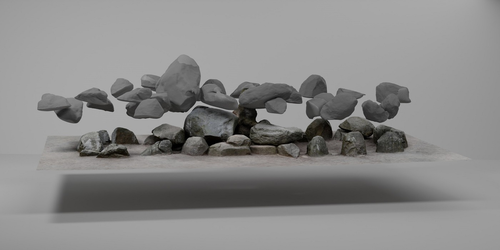
3Duewelsteene - A website for the 3D visualization of the megalithic passage grave Düwelsteene near Heiden in Westphalia, GermanyTharandt, Louise https://doi.org/10.5281/zenodo.7948379Online presentation of the digital reconstruction process of a megalithic tomb : “3Duewelsteene”Recommended by Sophie C. Schmidt and James Allison based on reviews by Robert Bischoff, Ronald Visser and Scott Ure based on reviews by Robert Bischoff, Ronald Visser and Scott Ure
“3Duewelsteene - A website for the 3D visualization of the megalithic passage grave Düwelsteene near Heiden in Westphalia, Germany” (Tharandt 2024) presents several 3-dimensional models of the Düwelsteene monument, along with contextual information about the grave and the process of creating the models. The website (https://3duewelsteene.github.io/) includes English and German versions, making it accessible to a wide audience. The website itself serves as the primary means of presenting the data, rather than as a supplement to a written text. This is an innovative and engaging way to present the research to a wider public. Düwelsteene (“Devil’s Stones”) is a megalithic passage grave from the Funnel Beaker culture, dating to approximately 3300 BC. to 2600 BC. that was excavated in 1932. The website displays three separate 3-dimensional models. They ares shown in the 3D viewer software 3DHOP, which enables viewers to interact with the models in several ways, Annotations on the models display further information. The first model was created by image-based modeling and shows the monument as it appears today. A second model uses historical photographs and excavation data to reconstruct the grave as it appeared prior to the 1932 archaeological excavation. Restoration work following the excavation relocated many of the stones. Pre-1932 photographs collected from residents of the nearby town of Heiden were then used to create a model showing what the tomb looked like before the restoration work. It is commendable that a “certainty view” of the model shows the certainty with which the stones can be put at the reconstructed place. Gaps in the 3D models of stones that were caused by overlap with other stones have been filled with a rough mesh and marked as such, thereby differentiating between known and unknown parts of the stones. The third model is the most imaginative and most interesting. As it shows as the grave as it might have appeared in approximately 3000 B.C., many aspects of this model are necessarily somewhat speculative. There is no direct evidence for exact size and shape of the capstones, the height of the mound, and other details. But enough is known about other similar constructions to allow these details to be inferred with some confidence. Again, care was taken to enable viewers to distinguish between the stones that are still in existence and those that were reconstructed. A video on the home page of the website adds a nice touch. It starts with the model of the Düwelsteene as it currently appears then shows, in reverse order, the changes to the grave, ending with the inferred original state. The 3D reconstructions are convincing and the methods well described. This project follows an open science approach and the FAIR principles, which is commendable and cutting edge in the field of Digital Archaeology. The preprint of the website hosted on zenodo includes all the photos, text, html files, and nine individual 3D model (.ply) files that are combined in the reconstructions exhibited on the website. A “readme.md” file includes details about building the models using CloudCompare and Blender, and modifications to the 3D viewer software (3DHOP) to get the website to improve the display of the reconstructions. We have to note that the link between the reconstructed models and the html page does not work when the files are downloaded from zenodo and opened offline. The html pages open in the browser, and the individual ply files work fine, but the 3D models do not display on the browser page when the html files are opened offline. The online version of the website is working perfectly. The 3Düwelsteene website combines the presentation of archaeological domain knowledge to a lay audience as well as in-depths information on the reconstruction process to make it an interesting contribution for researchers. By providing data and code for the website it also models an Open Science approach, which enables other researchers to re-use these materials. We congratulate the author on a successful reconstruction of the megalithic tomb, an admirable presentation of the archaeological work and the thoughtful outreach to a broad audience. Bibliography | 3Duewelsteene - A website for the 3D visualization of the megalithic passage grave Düwelsteene near Heiden in Westphalia, Germany | Tharandt, Louise | <p>The Düwelsteene near Heiden, Westphalia, is one of the most southern megalithic tombs of the Funnel Beaker culture. In 1932 the Düwelsteene were restored and the appearance of the grave was changed. Even though the megalithic tomb was excavated... |  | Computational archaeology, Mesolithic, Neolithic | Sophie C. Schmidt | 2023-05-21 17:24:22 | View | |
14 Sep 2020
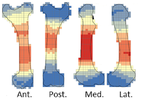
A way to break bones? The weight of intuitivenessDelphine Vettese, Trajanka Stavrova, Antony Borel, Juan Marin, Marie-Hélène Moncel, Marta Arzarello, Camille Daujeard https://doi.org/10.31219/osf.io/rebwtBreaking bones: Nature or Culture?Recommended by Beatrice Demarchi and Reuven Yeshurun based on reviews by Terry O'Connor, Alan Outram and 1 anonymous reviewerThe nature of breaking long bones for obtaining marrow is important in Paleolithic archaeology, due to its widespread, almost universal, character. Provided that hammer-stone percussion marks can be correctly identified using experimental datasets (e.g., [1]), the anatomical location and count of the marks may be taken to reflect recurrent “cultural” traditions in the Paleolithic [2]. Were MP humans breaking bones intuitively or did they abide by a strict “protocol”, and, if the latter, was this protocol optimized for marrow retrieval or geared towards another, less obvious goal? This paper provides a baseline for location analyses of percussion marks. Their dataset may therefore be regarded as a null hypothesis according to which the archaeological data could be tested. If Paleolithic patterns of percussion marks differ from Vettese et al.’s [3] “intuitive” patterns, then the null hypothesis is disproved and one can argue in favor of a learned pattern. The latter can be a result of ”culture”, as Vettese et al. [3] phrase it, in the sense of nonrandom action that draws on transmitted knowledge. Such comparisons bear a great potential for understanding the degree of technological behavior in the Paleolithic by factoring out the “natural” constraints of bone breakage patterns. Vettese et al. [3: fig. 14] started this discourse by comparing their experimental dataset to some Middle and Upper Paleolithic faunas; we are confident that many other studies will follow. Bibliography [1]Pickering, T.R., Egeland, C.P., 2006. Experimental patterns of hammerstone percussion damage on bones: Implications for inferences of carcass processing by humans. J. Archaeol. Sci. 33, 459–469. https://doi.org/10.1016/j.jas.2005.09.001 [2]Blasco, R., Rosell, J., Domínguez-Rodrigo, M., Lozano, S., Pastó, I., Riba, D., Vaquero, M., Peris, J.F., Arsuaga, J.L., de Castro, J.M.B., Carbonell, E., 2013. Learning by Heart: Cultural Patterns in the Faunal Processing Sequence during the Middle Pleistocene. PLoS One 8, e55863. https://doi.org/10.1371/journal.pone.0055863 [3]Vettese, D., Stavrova, T., Borel, A., Marin, J., Moncel, M.-H., Arzarello, M., Daujeard, C. (2020) A way to break bones? The weight of intuitiveness. BioRxiv, 011320, ver. 4 peer-reviewed and recommended by PCI Archaeology. https://doi.org/10.1101/2020.03.31.011320 | A way to break bones? The weight of intuitiveness | Delphine Vettese, Trajanka Stavrova, Antony Borel, Juan Marin, Marie-Hélène Moncel, Marta Arzarello, Camille Daujeard | <p>During the Middle Paleolithic period, bone marrow extraction was an essential source of fat nutrients for hunter-gatherers especially throughout cold and dry seasons. This is attested by the recurrent findings of percussion marks in osteologica... |  | Archaeometry, Bioarchaeology, Spatial analysis, Taphonomy, Zooarchaeology | Beatrice Demarchi | 2020-04-01 11:52:05 | View | |
17 Jun 2022
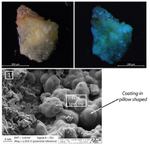
Light in the Cave: Opal coating detection by UV-light illumination and fluorescence in a rock art context. Methodological development and application in Points Cave (Gard, France)Marine Quiers, Claire Chanteraud, Andréa Maris-Froelich, Émilie Chalmin-Aljanabi, Stéphane Jaillet, Camille Noûs, Sébastien Pairis, Yves Perrette, Hélène Salomon, Julien Monney https://hal.archives-ouvertes.fr/hal-03383193v5New method for the in situ detection and characterisation of amorphous silica in rock art contextsRecommended by Aitor Ruiz-Redondo based on reviews by Alain Queffelec, Laure Dayet and 1 anonymous reviewerSilica coating developed in cave art walls had an impact in the preservation of the paintings themselves. Despite it still exists a controversy about whether or not the effects contribute to the preservation of the artworks; it is evident that identifying these silica coatings would have an impact to assess the taphonomy of the walls and the paintings preserved on them. Unfortunately, current techniques -especially non-invasive ones- can hardly address amorphous silica characterisation. Thus, its presence is often detected on laboratory observations such as SEM or XRD analyses. In the paper “Light in the Cave: Opal coating detection by UV-light illumination and fluorescence in a rock art context - Methodological development and application in Points Cave (Gard, France)”, Quiers and collaborators propose a new method for the in situ detection and characterisation of amorphous silica in a rock art context based on UV laser-induced fluorescence (LIF) and UV illumination [1]. The results from both methods presented by the authors are convincing for the detection of U-silica mineralisation (U-opal in the specific case of study presented). This would allow access to a fast and cheap method to identify this kind of formations in situ in decorated caves. Beyond the relationship between opal coating and the preservation of the rock art, the detection of silica mineralisation can have further implications. First, it can help to define spot for sampling for pigment compositions, as well as reconstruct the chronology of the natural history of the caves and its relation with the human frequentation and activities. In conclusion, I am glad to recommend this original research, which offers a new approach to the identification of geological processes that affect -and can be linked with- the Palaeolithic cave art. [1] Quiers, M., Chanteraud, C., Maris-Froelich, A., Chalmin-Aljanabi, E., Jaillet, S., Noûs, C., Pairis, S., Perrette, Y., Salomon, H., Monney, J. (2022) Light in the Cave: Opal coating detection by UV-light illumination and fluorescence in a rock art context. Methodological development and application in Points Cave (Gard, France). HAL, hal-03383193, ver. 5 peer-reviewed and recommended by Peer community in Archaeology. https://hal.archives-ouvertes.fr/hal-03383193v5 | Light in the Cave: Opal coating detection by UV-light illumination and fluorescence in a rock art context. Methodological development and application in Points Cave (Gard, France) | Marine Quiers, Claire Chanteraud, Andréa Maris-Froelich, Émilie Chalmin-Aljanabi, Stéphane Jaillet, Camille Noûs, Sébastien Pairis, Yves Perrette, Hélène Salomon, Julien Monney | <p style="text-align: justify;">Silica coatings development on rock art walls in Points Cave questions the analytical access to pictorial matter specificities (geochemistry and petrography) and the rock art conservation state in the context of pig... |  | Archaeometry, Europe, Rock art, Taphonomy, Upper Palaeolithic | Aitor Ruiz-Redondo | 2021-10-25 11:12:48 | View | |
02 Sep 2023
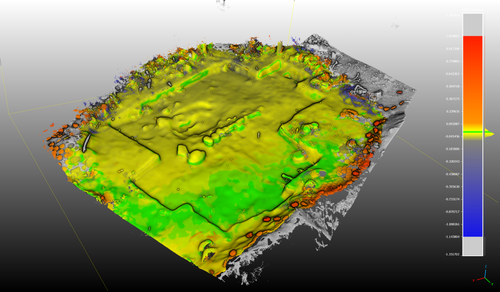
Towards a Mobile 3D Documentation Solution. Video Based Photogrammetry and iPhone 12 Pro as Fieldwork Documentation ToolsNikolai Paukkonen https://doi.org/10.5281/zenodo.7954534The Potential of Mobile 3D Documentation using Video Based Photogrammetry and iPhone 12 ProRecommended by Ying Tung Fung based on reviews by Dominik Hagmann, Sebastian Hageneuer and 1 anonymous reviewerI am pleased to recommend the paper titled "Towards a Mobile 3D Documentation Solution. Video Based Photogrammetry and iPhone 12 Pro as Fieldwork Documentation Tools" for consideration and publication as a preprint (Paukkonen, 2023). The paper addresses a timely and relevant topic within the field of archaeology and offers valuable insights into the evolving landscape of 3D documentation methods. The advances in technology over the past decade have brought about significant changes in archaeological documentation practices. This paper makes a valuable contribution by discussing the emergence of affordable equipment suitable for 3D fieldwork documentation. Given the constraints that many archaeologists face with limited resources and tight timeframes, the comparison between photogrammetry based on a video captured by a DJI Osmo Pocket gimbal camera and iPhone 12 Pro LiDAR scans is of great significance. The research presented in the paper showcases a practical application of these new technologies in the context of a Finnish Early Modern period archaeological project. By comparing the acquisition processes and evaluating the accuracy, precision, ease of use, and time constraints associated with each method, the authors provide a comprehensive assessment of their potential for archaeological fieldwork. This practical approach is a commendable aspect of the paper, as it not only explores the technical aspects but also considers the practical implications for archaeologists on the ground. Furthermore, the paper appropriately addresses the limitations of these technologies, specifically highlighting their potential inadequacy for projects requiring a higher level of precision, such as Neolithic period excavations. This nuanced perspective adds depth to the discussion and provides a realistic portrayal of the strengths and limitations of the new documentation methods. In conclusion, the paper offers valuable insights into the future of 3D field documentation for archaeologists. The authors' thorough evaluation and practical approach make this study a valuable resource for researchers, practitioners, and professionals in the field. I believe that this paper would be an excellent addition to PCIArchaeology and would contribute significantly to the ongoing dialogue within the archaeological community. References Paukkonen, N. (2023) Towards a Mobile 3D Documentation Solution. Video Based Photogrammetry and iPhone 12 Pro as Fieldwork Documentation Tools, Zenodo, 8281263, ver. 3 peer-reviewed and recommended by Peer Community in Archaeology. https://doi.org/10.5281/zenodo.8281263 | Towards a Mobile 3D Documentation Solution. Video Based Photogrammetry and iPhone 12 Pro as Fieldwork Documentation Tools | Nikolai Paukkonen | <p>New affordable equipment suitable for 3D fieldwork documentation has appeared during the last years. Both photogrammetry and laser scanning are becoming affordable for archaeologists, who often work with limited resources and tight time constra... |  | Europe, Post-medieval, Remote sensing | Ying Tung Fung | 2023-05-21 21:32:33 | View | |
16 May 2022

Wood technology: a Glossary and Code for analysis of archaeological wood from stone tool culturesAnnemieke Milks, Jens Lehmann, Utz Böhner, Dirk Leder, Tim Koddenberg, Michael Sietz, Matthias Vogel, Thomas Terberger https://osf.io/x8m4jOpen glossary for wood technologiesRecommended by Ruth Blasco based on reviews by Paloma Vidal-Matutano, Oriol López-Bultó, Eva Francesca Martellotta and Laura Caruso Fermé based on reviews by Paloma Vidal-Matutano, Oriol López-Bultó, Eva Francesca Martellotta and Laura Caruso Fermé
Wood is a widely available and versatile material, so it is not surprising that it has been a key resource throughout human history. However, it is more vulnerable to decomposition than other materials, and its direct use is only rarely recorded in prehistoric sites. Despite this, there are exceptions (e.g., [1-5] [6] and references therein), and indirect evidence of its use has been attested through use-wear analyses, residue analyses (e.g., [7]) and imprints on the ground (e.g., [8]). One interesting finding of note is that the technology required to make, for example, wooden spears was quite complex [9], leading some authors to propose that this type of tool production represented a cognitive leap for Pleistocene hominids [10]. Other researchers, however, have proposed that the production process for wooden tools could have been much easier than is currently thought [11]. Be that as it may, in recent years researchers have begun to approach wood remains systematically, developing analyses of natural and anthropogenic damage, often with the help of experimental reference samples. In this work, the authors elaborate a comprehensive glossary as a first step towards the understanding of the use of wood for technological purposes in different times and places, as there is still a general gap in the established nomenclature. Thus, this glossary is a synthesis and standardisation of analytical terms for early wood technologies that includes clear definitions and descriptions of traces from stone tool-using cultures, to avoid confusion in ongoing and future studies of wood tools. For this, the authors have carried out a detailed search of the current literature to select appropriate terms associated with additional readings that provide a wide, state-of-the-art description of the field of wood technology. An interesting point is that the glossary has been organised within a chaîne opératoire framework divided into categories including general terms and natural traces, and then complemented by an appendix of images. It is important to define the natural traces –understanding these as alterations caused by natural processes–because they can mask those modifications produced by other agents affecting both unmodified and modified wood before, during or after its human use. In short, the work carried out by Milks et al. [6] is an excellent and complete assessment and vital to the technological approach to wooden artifacts from archaeological contexts and establishing a common point for a standardised nomenclature. One of its particular strengths is that the glossary is a preprint that will remain open during the coming years, so that other researchers can continue to make suggestions and refinements to improve the definitions, terms and citations within it. [1] Oakley, K., Andrews, P., Keeley, L., Clark, J. (1977). A reappraisal of the Clacton spearpoint. Proceedings of the Prehistoric Society 43, 13-30. https://doi.org/10.1017/S0079497X00010343 [2] Thieme, H. (1997). Lower Palaeolithic hunting spears from Germany. Nature 385, 807-810. https://doi.org/10.1038/385807a0 [3] Schoch, W.H., Bigga, G., Böhner, U., Richter, P., Terberger, T. (2015). New insights on the wooden weapons from the Paleolithic site of Schöningen. Journal of Human Evolution 89, 214-225. https://doi.org/10.1016/j.jhevol.2015.08.004 [4] Aranguren, B., Revedin, A., Amico, N., Cavulli, F., Giachi, G., Grimaldi, S. et al. (2018). Wooden tools and fire technology in the early Neanderthal site of Poggetti Vecchi (Italy). Proceedings of the National Academy of Sciences. 115, 2054-2059. https://doi.org/10.1073/pnas.1716068115 [5] Rios-Garaizar, J., López-Bultó, O., Iriarte, E., Pérez-Garrido, C., Piqué, R., Aranburu, A., et al. (2018). A Middle Palaeolithic wooden digging stick from Aranbaltza III, Spain. PLoS ONE 13(3): e0195044. https://doi.org/10.1371/journal.pone.0195044 [6] Milks, A. G., Lehmann, J., Böhner, U., Leder, D., Koddenberg, T., Sietz, M., Vogel, M., Terberger, T. (2022). Wood technology: a Glossary and Code for analysis of archaeological wood from stone tool cultures. Peer-reviewed and recommended by PCI Archaeology https://doi.org/10.31219/osf.io/x8m4j [7] Nugent, S. (2006). Applying use-wear and residue analyses to digging sticks. Mem Qld Mus Cult Herit Ser 4, 89-105. https://search.informit.org/doi/10.3316/informit.890092331962439 [8] Allué, E., Cabanes, D., Solé, A., Sala, R. (2012). Hearth Functioning and Forest Resource Exploitation Based on the Archeobotanical Assemblage from Level J, in: i Roura E. (Ed.), High Resolution Archaeology and Neanderthal Behavior: Time and Space in Level J of Abric Romaní (Capellades, Spain). Springer Netherlands, Dordrecht, pp. 373-385. https://doi.org/10.1007/978-94-007-3922-2_9 [9] Ennos, A.R., Chan, T.L. (2016). "Fire hardening" spear wood does slightly harden it, but makes it much weaker and more brittle. Biology Letters 12. https://doi.org/10.1098/rsbl.2016.0174 [10] Haidle, M.N. (2009). How to think a simple spear?, in: de Beaune S.A., Coolidge F.L., Wynn T. (Eds.), Cognitive Archaeology and Human Evolution. Cambridge University Press, New York, pp. 57-73. [11] Garofoli, D. (2015). A Radical Embodied Approach to Lower Palaeolithic Spear-making. Journal of Mind and Behavior 36, 1-26. | Wood technology: a Glossary and Code for analysis of archaeological wood from stone tool cultures | Annemieke Milks, Jens Lehmann, Utz Böhner, Dirk Leder, Tim Koddenberg, Michael Sietz, Matthias Vogel, Thomas Terberger | <p>The analysis of wood technologies created by stone tool-using cultures remains underdeveloped relative to the study of lithic and bone technologies. In recent years archaeologists have begun to approach wood assemblages systematically, developi... |  | Ancient Palaeolithic, Archaeobotany, Mesolithic, Middle Palaeolithic, Neolithic, Raw materials, Taphonomy, Traceology, Upper Palaeolithic | Ruth Blasco | 2021-12-01 12:18:53 | View | |
02 Feb 2024
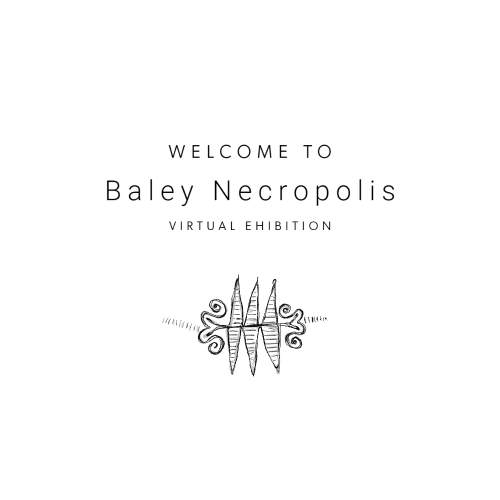
Implementing Digital Documentation Techniques for Archaeological Artifacts to Develop a Virtual Exhibition: the Necropolis of Baley CollectionRaykovska Miglena, Jones Kristen, Klecherova Hristina, Alexandrov Stefan, Petkov Nikolay, Hristova Tanya, Ivanov Georgi https://doi.org/10.5281/zenodo.8027548Out of the storeroom and into the virtualRecommended by Jitte Waagen based on reviews by Alicia Walsh and 1 anonymous reviewer based on reviews by Alicia Walsh and 1 anonymous reviewer
This paper (Raykovska et al. 2023) discusses the digital documentation techniques and development of a virtual exhibition for artefacts retrieved from the necropolis of Baley, Bulgaria. The principal aim of this particular project is a solid one, trying to provide a solution to display artefacts that would otherwise remain hidden in museum storerooms. The paper describes how through a combination of 3D scanning and photogrammetry high quality 3D models have been produced, and provide content for an online virtual exhibition for the scientific community but also the larger public. It is a well-written and concise paper, in which the information on developed methods and techniques are transparently described, and various important aspects of digitization workflows, such as the importance of storing raw data, are addressed. The paper is a timely discussion on this subject, as strategies to develop digital artefact collections and what to do with those are increasingly being researched. Specifically, it discusses a workflow and its results, both in great detail. Although critical reflection on the process, goals and results from various perspectives would have been a valuable addition to the paper (cf., Jeffra 2020, Paardekoper 2019), it nonetheless provides a good practice example of how to approach the creation of a virtual museum. Those who consider projects concerning digital documentation of archaeological artefacts as well as the creation of virtual spaces to use those in for research, education or valorisation purposes would do well to read this paper carefully. References Jeffra, C., Hilditch, J., Waagen, J., Lanjouw, T., Stoffer, M., de Gelder, L., and Kim, M. J. (2020). Blending the Material and the Digital: A Project at the Intersection of Museum Interpretation, Academic Research, and Experimental Archaeology. The EXARC Journal, 2020(4). https://exarc.net/ark:/88735/10541 Paardekooper, R.P. (2019). Everybody else is doing it, so why can’t we? Low-tech and High-tech approaches in archaeological Open-Air Museums. The EXARC Journal, 2019(4). https://exarc.net/ark:/88735/10457/ Raykovska, M., Jones, K., Klecherova, H., Alexandrov, S., Petkov, N., Hristova, T., and Ivanov, G. (2023). Implementing Digital Documentation Techniques for Archaeological Artifacts to Develop a Virtual Exhibition: the Necropolis of Baley Collection. https://doi.org/10.5281/zenodo.10091870 | Implementing Digital Documentation Techniques for Archaeological Artifacts to Develop a Virtual Exhibition: the Necropolis of Baley Collection | Raykovska Miglena, Jones Kristen, Klecherova Hristina, Alexandrov Stefan, Petkov Nikolay, Hristova Tanya, Ivanov Georgi | <p>Over the past decade, virtual reality has been quickly growing in popularity across disciplines including the field of archaeology and cultural heritage. Despite numerous artifacts being uncovered each year by archaeological excavations around ... |  | Ceramics, Computational archaeology, Conservation/Museum studies | Jitte Waagen | 2023-06-12 14:02:44 | View |
MANAGING BOARD
Alain Queffelec
Marta Arzarello
Ruth Blasco
Otis Crandell
Luc Doyon
Sian Halcrow
Emma Karoune
Aitor Ruiz-Redondo
Philip Van Peer










